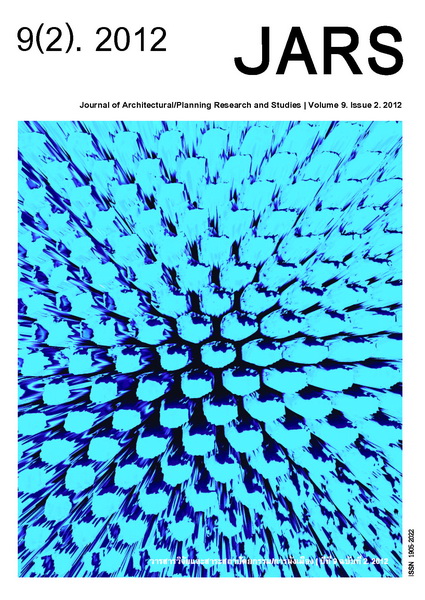Decorative Products and Furniture from Newly Developed Recycled Paper Pulp
Main Article Content
Abstract
This research is the development of composite material (paper pulp) for the manufacture of furniture and other decorative objects. The physical and mechanical properties of recycled pulp mixture were tested in ratios of 0.05, 0.10, 0.15 and 0.20 with and without plastic mesh. This material also consisted of cement, gypsum, sand, water (ratio 1:0.25:0.25:4 respectively). Different amounts of pulp, as described above, were mixed to develop composite material and to assemble the furniture and decorative objects. The composite material was then used to make furniture and tested.
The results showed that the use of paper and plastic mesh material improved the quality of the products. The increase in the amount of paper made low density (light weight) objects. The objects made from recycled composite material were easy to cut, drill and polish. Plastic mesh (net) increased the bending flexibility of the objects. The most suitable ratio for the production of furniture and decorative object was 1:0.25:0.25:4:0.10. For manufacturing children’s chairs, plastic water bottles were used to reduce the amount of materials, to reduce the weight and increase the compression efficiency as needed. Decorative objects with netted plastic properties of recycled composite material were as strong as wood and plywood. The furniture made from recycled composite material had similar qualities as plywood and was a good replacement for plywood furniture. Another interesting feature was that the swelling properties in water were lower than furniture made from plywood in the market.
Therefore, the use of composite material made from paper pulp is a good option for the production of furniture and decorative objects. It is a highly attractive and decorative alternative material for producing furniture in the market.
Downloads
Article Details

This work is licensed under a Creative Commons Attribution-NonCommercial-NoDerivatives 4.0 International License.
All material is licensed under the terms of the Creative Commons Attribution 4.0 International (CC-BY-NC-ND 4.0) License, unless otherwise stated. As such, authors are free to share, copy, and redistribute the material in any medium or format. The authors must give appropriate credit, provide a link to the license, and indicate if changes were made. The authors may do so in any reasonable manner, but not in any way that suggests the licensor endorses you or your use. The authors may not use the material for commercial purposes. If the authors remix, transform, or build upon the material, they may not distribute the modified material, unless permission is obtained from JARS. Final, accepted versions of the paper may be posted on third party repositories, provided appropriate acknowledgement to the original source is clearly noted.
References
Assasutjarit, C., Hirunlabh, J., Khedari, J., Charoenvai, S., Zeghmati, B., & Cheul, S. U. (2007). Development of coconut coir-based lightweight cement board. Construction and Building Materials, 21(2), 277–288.
Charoenvai, S., Khedari, J. & Hirunlabh, J. (1999). การพัฒนาต้นแบบแผ่นชิ้นไม้อัดจากเปลือกทุเรียนและมะพร้าวที่ค่าสัมประสิทธิ์การนำความร้อนต่ำ [Development of new particleboards from durian peel and coconut coir with low thermal conductivity]. Master of Engineering Thesis (Energy Technology), School of Energy, Environment and Materials, King Mongkut’s University of Technology Thonburi.
Collins, R. J. & Ciesielski, S. K. (1993). Recycling and use of waste materials and by-products in highway construction (pp. 122-150). Washington, DC: National Academy Press.
IKEA. (2004). IKEA’s Big Idea, Spring 2004 issue: Surface and panel. Sweden: Author.
Khedari, J., Charoenvai, S. & Hirunlabh, J. (2003). New insulating particleboards from durian peel and coconut coir. Building and Environment, 38(3), 435-441.
Office of Waste and Hazardous Substances Management Bureau. (2006). สถานการณ์ขยะของประเทศไทย ตอนที่ 4 [Waste report in Thailand]. Retrieved December 22, 2011, from http://www.pcd.go.th/download/waste.cfm.
Okino, E. Y. A., Santana, M. A. E. & de Souza, M. R. (2000). Utilization of wastepaper to manufacture low density boards. Bioresource Technology, 73(1), 77-79.
Samkaew, P., Kamharpon, P. & Satitkriangkrai, V. (2003). การผลิตเฟอร์นิเจอร์จากเศษกระดาษธนบัตรเก่าและขี้เลื่อย [Furniture making from old banknote paper and sawdust]. Bachelor of Science Research Project (Printing and Packing Technology), School of Energy, Environment and Materials, King Mongkut’s University of Technology Thonburi.
Schroeder, R. L. (1994). The use of recycled materials in highway construction. Federal Highway Administration, 58(2), 32-41.
Thailand Institute of Packaging and Recycle Management for Sustainable Environment [TIPMSE]. (2006). ความรู้เรื่องรีไซเคิล ตอน 1 บรรจุภัณฑ์กระดาษกับสิ่งแวดล้อม [Paper recycling: Sustainable pakaging]. Retrieved February 17, 2011, from http://www.tipmse.or.th/datafiles/file/ความรู้เรื่องรีไซเคิล%201-5.doc.
Yodnumkhum, W. (2005). การพัฒนา การผลิต แผ่นซีเมนต์เยื่อกระดาษอัดขึ้นรูป [Production development of cement composite plates reinforced with wastepaper fibers]. Master of Science Thesis (Civil Engineering), Faculty of Industrial Education and Technology, King Mongkut’s University of Technology Thonburi.


